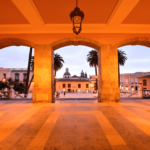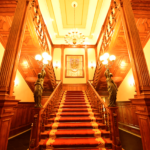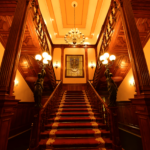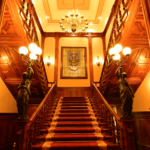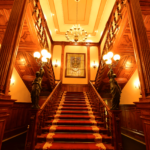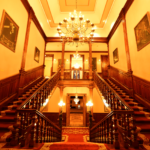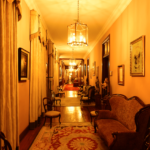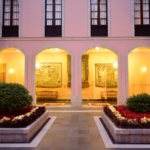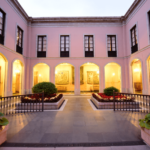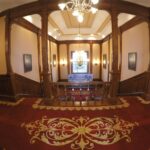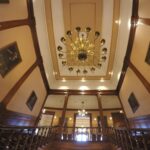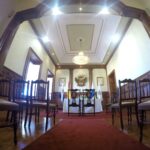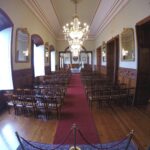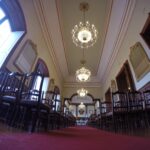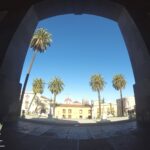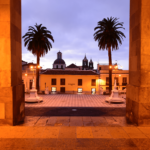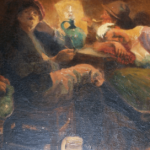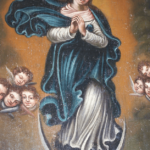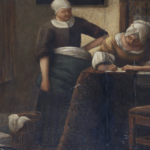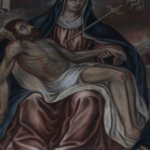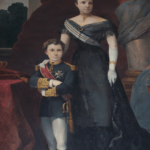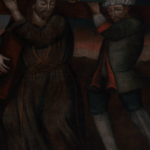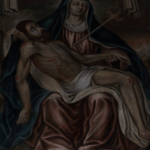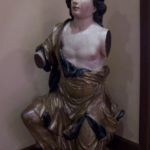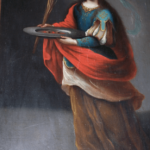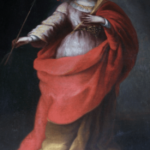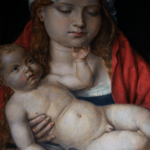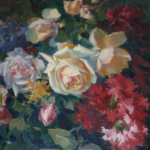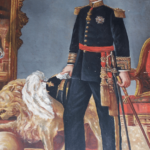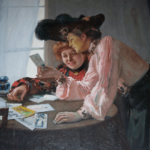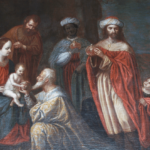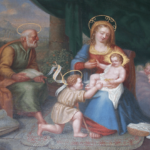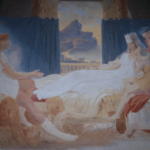01. Municipal Palace – Town Hall
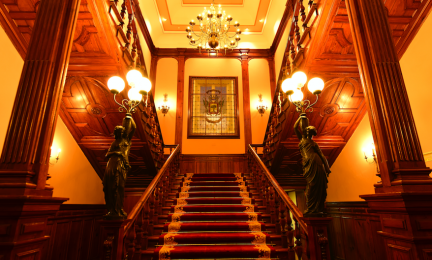
It is a neoclassical building whose origin dates back to the mid-nineteenth century, when the old Clarisse convent of San Jose, was affected by the Mendizabal law and had to be demolished. Today, the present structure is shared by the architects Maffiotte and Manuel de Oraá, who proposed it as a horizontal volume of clear neoclassical lines, in an attempt to pay the greatest attention to the central body in which a small loggia is built and it is finished with a triangular pediment. In 2001, a complete remodelling of the building was begun, finishing the works in early 2005. The main transformation affected the replacement of the articulation of the backyards, of a clear traditional style, by two open spaces of classic lines that face the old Carretera del piche (tar road), currently called Linares Rivas, now converted into a pedestrian promenade with benches, fountains and planters.
The façade is distinguished by the central wall, from the open portico to the triangular pediment that crowns it, with Mariano Estanga’s decoration on the tympanum. The rest of the frontispiece is articulated by lintelled spans, framed by stone mouldings, arranged in a regular pattern and decorated with elements borrowed from the neoclassical repertoire. One of the greatest interest is the interior layout of the building, whose structure is B / A / B, that is to say, a pair of galleries that start from the central body and run along each patio, whose remodelling has transformed them from a Mudejar style into a Classicist one.
ARTWORKS
The works of art exhibited in the Orotava Town Hall come from three sets of goods owned by the municipality: the Reinhold Erwin Schoenwerk Fund known as the ‘German man’s Heritage’; The Fund of the old Orotava Casino and the Municipal or the Town Hall Collection.
The one known as the ‘German man’s Heritage’ constitutes the main and more numerous artistic presence of the Town Hall. Consisting of a large formal and stylistic repertoire, Reinhold Erwin Schoenwerk, in his last will and testament, donated it to the town of La Orotava, upon his death in 1976. In March 2005, a large part of this heritage, consisting of paintings, sculptures and pieces of furniture, was transferred to the then newly renovated Consistorial Houses.
The next large collection of goods is represented by the Fund of the old Orotava Casino, a company incorporated in 1853, located at number 3 Tomás Pérez street -now the Municipal Library-, from 1924 to the early 1970s, when this institution ceased its activities, although it was not dissolved until 1994. In 1981, the donation of part of the main building, as well as the furniture to the Town of La Orotava, was carried out as part of the liquidation of the patrimonial assets of the Casino, an action that would be completed after the dissolution of the entity, in 1994. Since that same year, the Town Council took hold of the entire property and of the movable property present therein, which make up a set of partially conserved elements, among which several landscape paintings by Canarian artists, chairs, lamps and the collection of mirrors that singularize the Plenary Hall stand out.
The Town Hall collection includes, among others, eight paintings ceded in deposit by the Prado Museum in 1911; Two paintings from the disappeared convent of San Nicolás de La Orotava (La Piedad and Nazareno con Simón Cirineo), the tapestries that decorate the first floor which were made exclusively for the reopening of the building, among other pieces of furniture of different natures.
The collections are displayed in the halls of the building: lobbies, corridors and stairs, which, given the large number of artistic elements present in them, have become actual museum rooms. The works are arranged following the suggested itinerary, which corresponds to the spatial distribution of the building, based on a central body from which symmetrical galleries are found left and right, interrupted by four transverse corridors.
The walls on the ground floor as well as the side steps are decorated with twenty-two tapestries acquired in 2005 at the Peña Factory in Madrid, which depict local customs, mythological and landscape scenes inspired by Spanish and Nordic artists.
The main staircase is decorated with six religious paintings from the 17th and 18th centuries: La Piedad (Francisco Rodríguez), Jesús Nazareno, Santa Úrsula, Nazareno con Simón Cirineo, Mª Magdalena penitente (Antonio Bianchi) and Santa Lucía (Virgin of Piety, Jesus Nazarene, Saint Ursula, Nazarene with Simon of Cyrene, Penitent Mary Magdalene).
The paintings, the sculptural work and furniture, are located on the second floor, with artistic objects mainly from Northern Europe, produced between the sixteenth and nineteenth centuries, whose location does not meet stylistic criteria. Due to their artistic quality, two paintings stand out: La Virgen con el Niño (16th century Flemish painting) and La Adoración de los Reyes Magos (16th century Spanish-Flemish school) (Virgin with Child, Adoration of the Magi).
Special mention should be made of the paintings given by the Prado Museum, which occupy the entrance of the Plenary Hall. The rest of the works of art are distributed along the corridors.
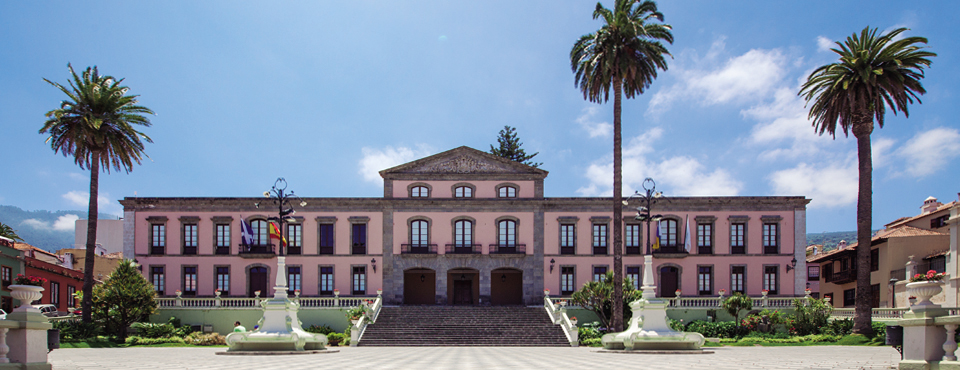
TOWN HALL SQUARE
The area known as the Town Hall square was, well into the nineteenth century, part of the Clare nuns convent of San José; A building that happened to be a municipal property after the 1836 seizure decree, although it would not be demolished until 1868. Part of the resulting land was then considered as the perfect esplanade for the celebration of festive events; it is the reason why years later, in 1895, the architect Antonio Pintor Ocete commissioned the first planning project of the square. Nevertheless, the economic difficulties that the municipality was suffering prevented the remodelling of the space until 1911, when it began to be reformed following a project by Mariano Estanga. This was due, to a large extent, to the economic contribution of the mayor Tomás Pérez. Finally the space as it is known today was inaugurated in April 1912, presenting itself as a square delimited by a balustrade that is interrupted from section to section by the placement of a concrete bench, that displays the town coat of arms, highlighting the greatly eclectic component of the design.
It is the typical scenario of multiple events of a different nature, since 1919 and during the patron saint’s festivities, its more than 900 m2 become the canvas for the monumental tapestry made of volcanic sands from Cañadas del Teide, the highest artistic manifestation of Villa de La Orotava.

